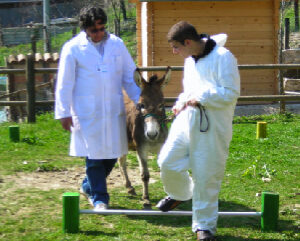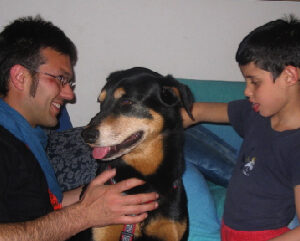Animal-assisted zooanthropology is similar to the better-known ‘pet therapy’ or ‘animal assisted intervention’, but differs from it in assumptions and methodology. Animal-assisted zooanthropology acknowledges the supportive and co-therapeutic value of the encounter with animal otherness. However, we distinguish between:
1) general benefits, namely the benefits deriving from emotions such as joy and participation, which are typically triggered by the encounter with another species;
2) referential benefits, namely contributions that stimulate changes in the individual. They derive from the specific “relationship dimensions” that are activated during the sessions.

To obtain general benefits, the session needs to be adequately prepared. The non-human animal who takes part in the session must be acknowledged and valued.
Referential benefits are the true co-therapeutic content of the session, which must be based on the patient’s needs. This requires knowledge and understanding of the different contributions that precise relationship dimensions offer. But it also requires knowledge and understanding of their side-effects.
 Examples of applied relationship dimensions are the following:
Examples of applied relationship dimensions are the following:
i) the epimeletic dimension, based on caregiving activities; it encourages decentralization, self-confidence and prosocial behaviour;
ii) the ludic dimension, based on games and playing; it promotes psychomotor skills, cheerfulness and a sense of security;
iii) the explorative dimension, based on observation and research activities; it diverts the patient from obsessive thoughts and anxiety and can reduce egocentric and narcissistic tendencies;
iv) the aesthetic dimension, based on activities that open and stimulate the senses; it helps to relax, reduce tension, contain stress, and alleviate a sense of oppression;
v) the comic dimension, based on ironic activities and paradoxical representations; it stimulates relaxation and helps to cope with challenging circumstances, such as imprisonment or hospitalization.

